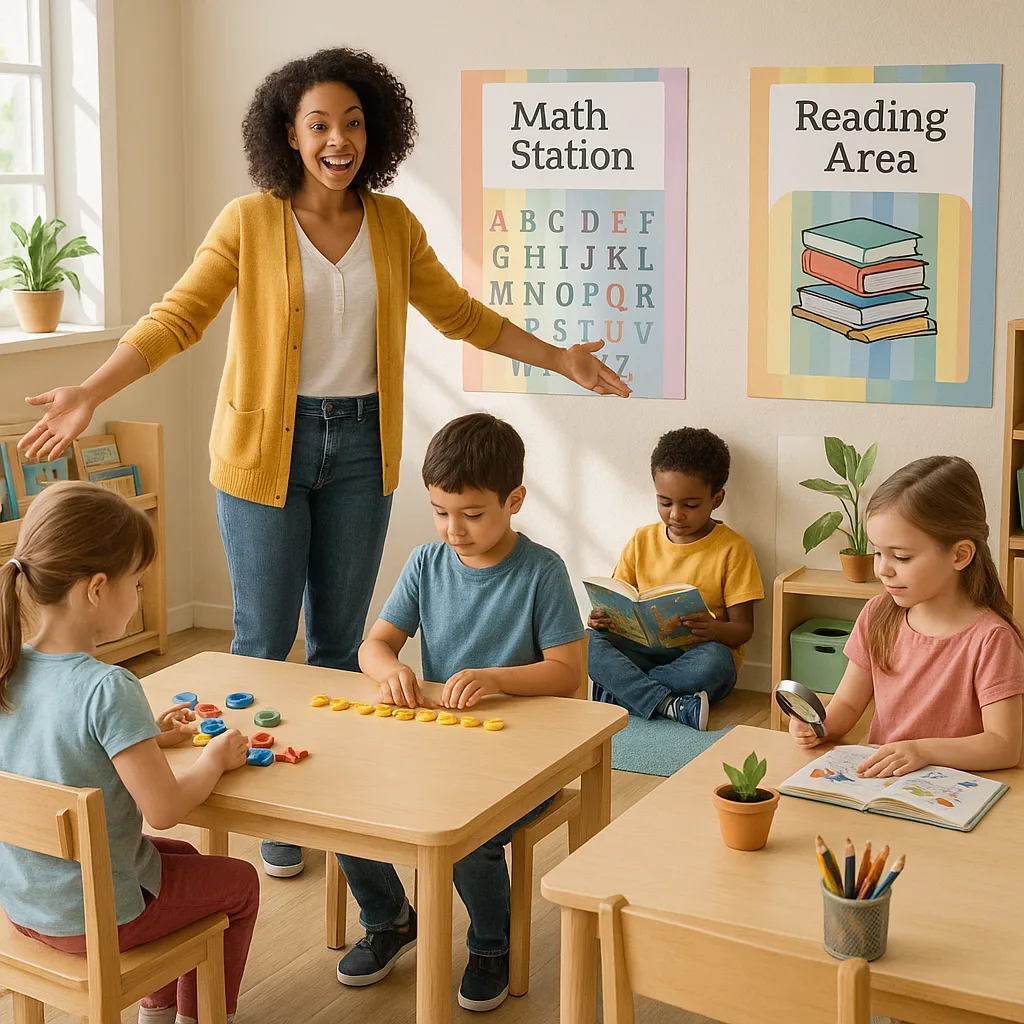Poster Machines for Differentiated Learning Stations
Why Poster Machines for Learning Stations Work Magic
When I started teaching, I quickly realized that my 22 students learned in wonderfully different ways. Some needed visual cues, others thrived with hands-on activities, and a few required extra support with basic concepts. Traditional one-size-fits-all teaching wasn’t cutting it!
That’s when I discovered the power of visual learning stations. Using our school’s Classroom Pro 24 Poster Maker Advanced Package, I began creating targeted poster displays for different learning objectives. The transformation was immediate – students who struggled with traditional instruction suddenly found their groove through visual supports.
What makes poster machines for schools so effective is their ability to produce high-quality, customized materials on demand. Instead of relying on generic store-bought posters, I can create displays tailored to my students’ exact needs, interests, and learning levels. This flexibility has been game-changing for differentiated instruction.
Designing Posters for Different Learning Styles
Creating effective station posters means understanding how different students process information. Through trial and error (and lots of observation!), I’ve developed poster designs that cater to various learning preferences.
For visual learners, I use bright colors, clear diagrams, and picture-word associations. My phonics posters feature large letter formations with corresponding images – ‘A’ paired with a vibrant apple illustration, for instance. These students gravitate toward stations with rich visual content.
Kinesthetic learners need posters that invite interaction. I create displays with lift-the-flap elements, texture samples for sensory exploration, and movement instructions. My favorite is our “Math Moves” poster where students physically act out addition and subtraction problems.
Auditory learners benefit from posters featuring rhymes, songs, and verbal patterns. Using our Campus Pro 24 Poster Maker, I print QR codes that link to recorded instructions or songs, making posters multi-sensory learning tools.

Poster Machines for Learning Stations: Implementation Tips
Getting started with poster-based learning stations doesn’t have to be overwhelming. Here are my tried-and-true implementation strategies:
Start Small: Begin with just two stations and gradually expand. This allows you to refine your approach without overwhelming yourself or students. I started with a reading corner and math station, adding others as we found our rhythm.
Involve Students: Let students help create posters using the poster machine for schools. This ownership increases engagement and ensures materials reflect their interests. My students love “Poster Design Fridays” where they collaborate on next week’s station materials.
Regular Updates: Refresh poster content every 2-3 weeks to maintain novelty. Having a poster machine on-site makes this feasible without breaking the budget. I coordinate updates with our curriculum pacing, ensuring stations always support current learning objectives.
Clear Instructions: Each station needs explicit poster guides showing what to do, how long to stay, and where to go next. Visual schedules and timers help students self-manage their rotations.
Differentiation in Action: Real Classroom Examples
Let me share how poster stations support my diverse learners through specific examples:
Emma’s Story: Emma struggles with letter recognition but loves art. At our phonics station, she works with textured letter posters I created using special paper from our poster machine. She traces letters with her finger while looking at corresponding images, engaging multiple senses. Her progress has been remarkable – from recognizing 5 letters to 20 in just two months!
Marcus’s Challenge: As an advanced reader, Marcus was getting bored during literacy stations. I now create challenge posters with complex word puzzles and reading comprehension questions at his level. The poster machine for schools allows me to print materials that stretch his abilities while keeping him engaged with peers at shared stations.
Supporting ELL Students: My three English language learners benefit from bilingual poster displays. Using our variety of poster materials, I create vocabulary cards in both English and Spanish, helping them bridge languages while building confidence.
Making Stations Sustainable: Teacher Well-being Matters
Initially, I worried that managing poster stations would add to my workload. Instead, I’ve found they actually reduce daily stress! Here’s why:
Poster machines make material creation quick and easy. What once took hours of cutting and laminating now takes minutes. I can respond to student needs immediately, printing differentiated materials during prep time.
The visual nature of stations promotes student independence. Clear poster instructions mean fewer repetitive explanations, giving me more time for small group instruction and individual support.
Parents love seeing the professional-quality materials their children work with. Our funding options helped our PTO understand the value of investing in a poster machine for long-term classroom enhancement.
Most importantly, watching students succeed with visual supports reignites my teaching passion daily. There’s nothing quite like seeing a struggling reader suddenly connect with a concept through the perfect poster display!
Ready to Transform Your Classroom?
Creating effective learning stations with poster machines has revolutionized how I teach and how my students learn. From supporting diverse learners to building independence and engagement, visual stations offer endless possibilities for differentiated instruction.
Start small, dream big, and watch your students soar with visual learning stations!

